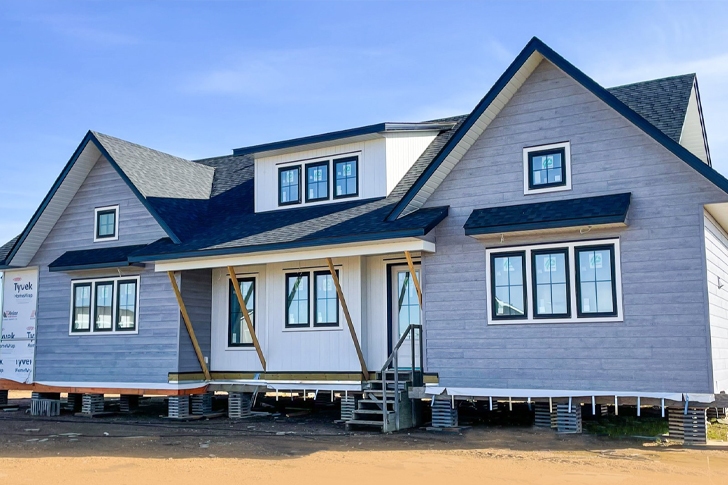2023 Overview: Economical Prefabricated Homes
The demand for affordable and sustainable housing has seen significant growth in recent years, with prefabricated homes emerging as a compelling solution amid rising construction costs and increasing environmental concerns. As we delve into the details of prefabricated homes in 2023, it is clear that these structures offer not only economical options but also versatility and efficiency in building. This article explores the current landscape of prefabricated homes, analysing their costs, benefits, technological advancements, and market trends.

Economic Benefits of Prefabricated Homes
Prefabricated or modular homes are manufactured in a factory setting and then assembled on-site. This process drastically reduces the construction time, which traditionally extends several months for conventional homes. According to industry reports, prefabricated homes can be constructed up to 50% faster than traditional homes. This time efficiency translates to significant cost savings—reducing labor hours, minimizing on-site waste, and lowering overall project expenses. The Modular Home Builders Association highlights that homeowners can save 10-20% on building costs with prefabricated options compared to traditional construction methods.
Sustainability and Efficiency
Beyond economic advantages, prefabricated homes contribute positively to environmental sustainability. These homes are often built with eco-friendly materials, and since construction takes place indoors, material waste is substantially reduced. Additionally, the controlled environment reduces the chances of materials being exposed to elements, thereby minimizing potential wastage. A study from the U.S. Green Building Council suggests that modular construction can decrease material waste by up to 90%. Moreover, these homes are typically more energy-efficient, leading to lower utility costs for homeowners and a reduced carbon footprint.
Technological Advancements in Prefabricated Homes
In 2023, technological advancements have played a pivotal role in the evolution of prefabricated homes. With innovations such as 3D printing and robotic automation, manufacturers can produce components more quickly, precisely, and at lowered costs. Notably, a company in Austin, Texas, has utilized 3D printing technology to construct a 350-square-foot home in just 48 hours, a project that typically would have taken weeks. This rapid construction capability demonstrates the potential scalability of prefabricated homes to address housing shortages efficiently and affordably.
Customization and Design Options
Contrary to popular belief, prefabricated homes offer a wide range of customization options. Manufacturers now provide diverse portfolios of designs that cater to various tastes and requirements—from single-story ranch styles to multi-story modern designs. Homebuyers can select finishes, fixtures, and even layouts that match their preferences, making prefabricated homes as customizable as their traditional counterparts. This flexibility ensures that homeowners do not have to compromise on aesthetics or functionality to benefit from the other advantages of modular housing.
Market Growth and Consumer Perception
The market for prefabricated homes has been on an upward trajectory, influenced by their cost-effectiveness and reduced construction timelines. In North America, the prefabricated housing market is projected to reach $27 billion by 2025, growing at a compound annual growth rate (CAGR) of 4.5%. This growth is powered by changing perceptions, with consumers increasingly viewing prefabricated homes as viable and permanent dwellings that offer quality, durability, and style. The increasing acceptance has also been bolstered by improvements in building standards and regulations, which have enhanced the trust and reliability associated with modular construction.
Challenges to Consider
Despite the benefits, there are challenges in the prefabricated housing sector that need addressing. Zoning laws and building codes in some regions have not kept pace with the technological advancements and capabilities of modular construction, causing delays and increasing costs. Additionally, there is a critical need for more skilled labor specifically trained in modular building techniques, which is essential to scale operations to meet housing demands.
Conclusion: The Future of Housing
As we review the advancements in prefabricated homes in 2023, it is evident that these dwellings present a promising solution to housing challenges, offering affordability, reduced environmental impact, and versatility. While there are hurdles to overcome—such as regulatory issues and workforce training—the potential of prefabricated homes in reshaping the housing landscape is undeniable. As technology continues to evolve and consumer attitudes shift further towards sustainable living, the future of prefabricated homes looks not only promising but essential. Addressing the current challenges will pave the way for these innovative homes to become a mainstay in addressing global housing needs.
Prefabricated homes in 2023 clearly represent a significant step towards solving affordability and sustainability issues in the housing sector. With ongoing advancements and increased market acceptance, these homes are set to play a crucial role in the future of residential construction worldwide.







Recent Comments